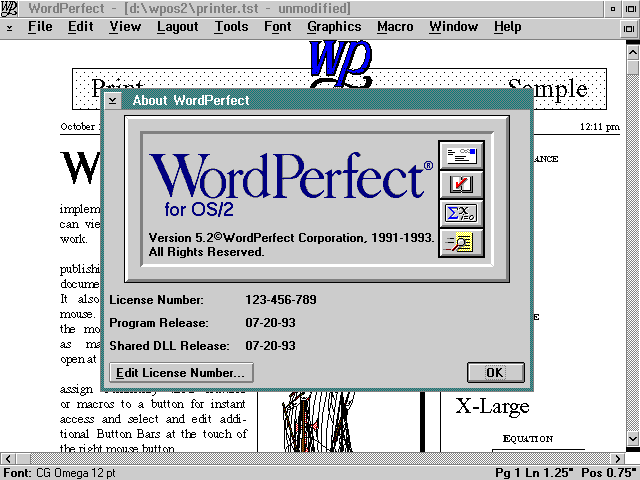



WordPerfect Corporation produced a variety of ancillary and spin-off products. Infamously, WordPerfect used F3 instead of F1 for Help, F1 instead of Esc for Cancel, and Esc for Repeat (though a configuration option in later versions allowed these functions to be rotated to more standard locations). This plethora of keystroke possibilities, combined with the developers' wish to keep the user interface free of 'clutter' such as on-screen menus, made it necessary for most users to use a keyboard template showing each function. For example, the Tab key and the related F4 (Indent) functions were adjacent. Many people still know the function key combinations from the DOS version, which were designed for the layout of the original 1981 IBM PC keyboard, with two columns of function keys at the left end of the keyboard. This was in contrast to WordStar, which used only Ctrl, in conjuction with traditional typing keys. WordPerfect used almost every possible combination of function keys with Ctrl, Alt, and Shift modifiers. In 1989, WordPerfect Corporation released the program's most successful version ever: WordPerfect 5.1 for DOS. WordPerfect 4.2 became the first program to overtake the original market leader (WordStar) in a major application category on the DOS platform. The program's popularity took off with the introduction of WordPerfect 4.2 in 1986, with automatic paragraph numbering (important to the legal market), and the splitting of a lengthy footnote and its partial overflow to the bottom of the next page, as if it had been professionally typeset (valuable to the academic market). Originally written for Data General minicomputers, in 1982 the developers ported the program to the IBM PC as WordPerfect 2.20, continuing the version numbering of the Data General series.

of Orem, Utah, which later renamed itself WordPerfect Corporation. WordPerfect was originally produced by Satellite Software International, Inc.


 0 kommentar(er)
0 kommentar(er)
